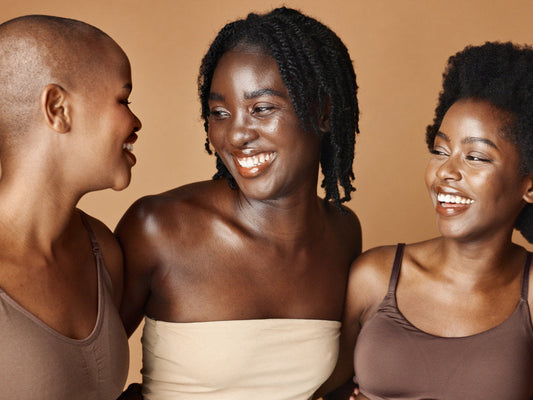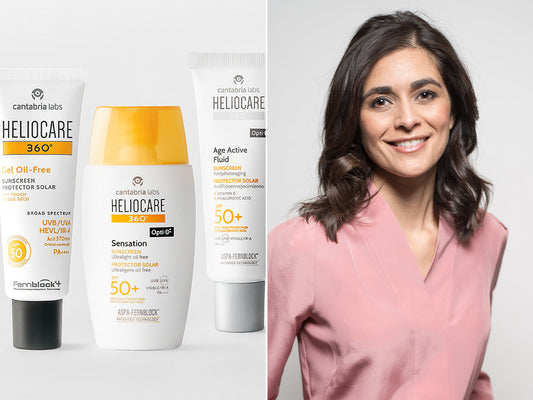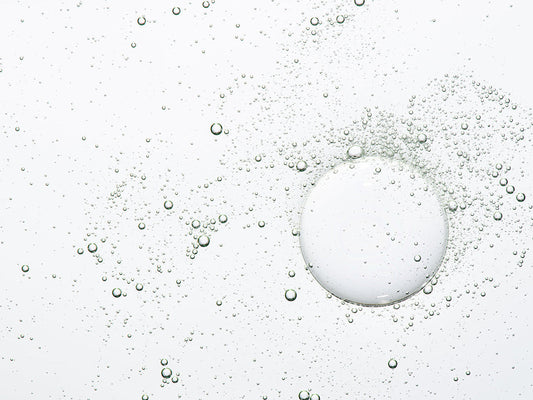How does skin cancer start?
Published on 03 May 2022
This Skin Cancer Awareness Month, we want to raise awareness about the causes of skin cancer and how you can protect yourself, your family and your friends from this incredibly preventable disease.
Skin cancer is one of the most common cancers in the world. In the UK alone, around 147,000 people are diagnosed with non-melanoma skin cancer every single year1.
There are two main types of skin cancer – non-melanoma, and melanoma skin cancer. Non-melanoma cancer includes basal cell carcinoma (BCC) and squamous cell carcinoma (SCC). It is these cancers that tend to develop on sun-damaged skin. Fortunately, there is a high cure rate for non-melanoma cancers and most patients require minor surgery with no further treatment2. With melanoma cancers, it is highly likely that sun exposure is a leading cause, however, other environmental and genetic factors are also at play. While melanoma only contributes to around 1% of skin cancers, it leads to the most deaths. That’s because it can spread to other parts of the body, including the lymph nodes and vital organs. Fortunately, many people suffering with melanoma are cured by their initial surgery3.
Of course, prevention is ALWAYS better than cure. So how can be protect our skin from cancer?
How skin cancer starts
Skin cancer is the abnormal growth of skin cells. It is usually caused by overexposure to UV radiation – the sun’s rays. Every time our skin is exposed to the sun (and other sources of UV radiation, like sunbeds), changes take place within the skin cell DNA. Too much radiation and too many changes will permanently damage the skin and lead to cancerous growths. Every decade that we spend exposing our skin to the sun further increases our risk of skin cancer4.
When the sun’s rays hit the skin, they perform in several different ways. High-energy UVB rays are almost completely absorbed by the outer layers of skin (the epidermis), causing direct DNA damage that can be observed in sunburn. Meanwhile, lower-energy UVA rays penetrate the deeper layers of skin (the dermis), causing long term DNA damage, which we can observe in premature skin ageing. Infrared-A and visible light also damage deep skin cells, an effect that is compounded by the presence of UV rays5.
All types of solar radiation have a damaging effect, the worst of which is DNA damage. This can lead to an uncontrollable growth of cells which becomes cancerous. UV radiation is the proven cause of BCC and SCC, as well as being contributing to melanoma, the most dangerous type of skin cancer6.
What does skin cancer look like?
Non-melanoma cancers grow slowly in the upper layers of the skin, while melanoma skin cancers are faster growing, spreading downwards into deeper layers of skin7. They mainly appear in areas of the body that are exposed to the sun, such as the face and legs.
Most often, the first sign of skin cancer is a new or changed lump, mole or freckle. This may grow and change over the course of months, or even years. If you are worried about a mole or freckle, we recommend following the ABCDE8 rule:
- Asymmetry: one half doesn’t match the other
- Border: the edges are ragged, uneven or blurred
- Colour: there are shades of black, brown and tan
- Diameter: it is more than 6mm in diameter
- Evolving: it continues to change over time
If you have any concerns about your skin and skin cancer, it’s vital that you speak to your GP as soon as possible.
Who is at risk?
The more often you expose your skin to the sun, and the more often you get burnt, the higher your risk of skin cancer. However, you don’t need to get sunburn for your skin cells to be damaged. Darker skin types may never experience sunburn, but that doesn’t mean skin cell DNA hasn’t been impacted by sun exposure.
You are at an increased risk of skin cancer if you’ve had it before or if you have a family history of skin cancer. You are also more likely to get it if your skin is pale, you have red or blonde hair, or you have a moley or freckley skin type9.
How to protect your skin against skin cancer
The single best way to protect yourself from skin cancer is to stay out of the sun and seek shade, especially during the peak hours between 11am and 2pm. You should also keep the skin covered; this could be with a light layer of clothing, a sun hat or a scarf. Finally, you should apply a high factor, broad spectrum sunscreen such as Heliocare 360°, every single day. What makes Heliocare 360° stand out from other sun products is Fernblock, a powerful, patented plant extract that protects the skin in so many ways.
Fernblock comes from the tropical fern Polypodium leucotomos. Over time, this aquatic plant developed a natural sun protection ability, evolving to grow and thrive on land. Its natural photoprotective properties allow it to absorb and scatter UV rays, as well as helping to repair tissues after sun exposure. The scientists behind Heliocare 360° harnessed this unique power within Fernblock, creating an incredible blend of anti-oxidants that provides multi-levels of protection from the full radiation spectrum: UVA, UVB, visible light and infrared-A.
As well as defending the skin’s structure and saving it from immediate sun damage, like sunburn, Fernblock’s anti-oxidant properties also protect us from the long-term effects of solar radiation. This is achieved by protecting against and repairing DNA damage, neutralising the free radicals that are generated by the sun, and protecting our Langerhans cells, which are crucial in the skin’s immune system. Fernblock also protects our collagen which helps to prevent signs of premature skin ageing, like wrinkles, and helps to prevent the appearance of pigmentation.
Over the last three decades, numerous clinical studies have confirmed the benefits of Fernblock, including its ability to prevent and repair DNA damage. Protect your skin every single day with Heliocare 360°, an award-winning range of sun protection products that’s loved by skin experts across the globe. Every Heliocare product is packed with deeply nourishing and intelligent ingredients, including the incredible Fernblock. Choose from our range of products and bundles today. Shop now, and don’t forget to share this information with your friends and family – after all, prevention is always better than cure.



